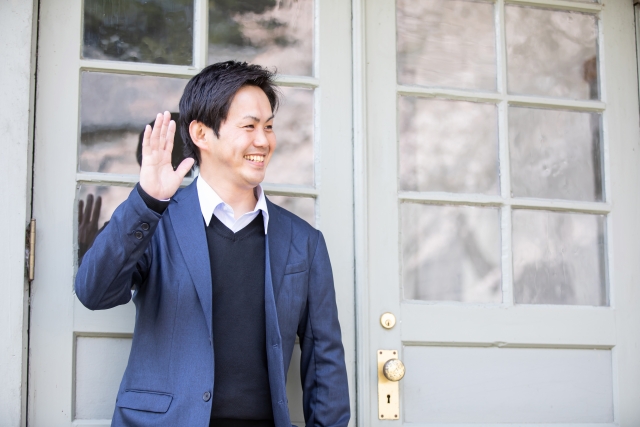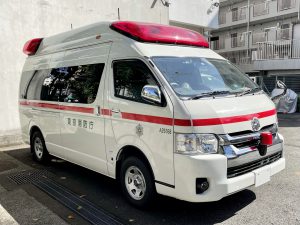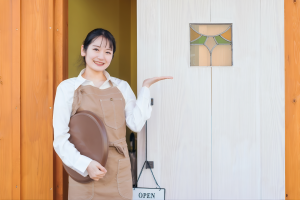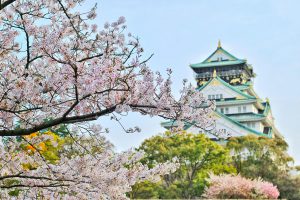Introduction
Saying goodbye is just as important as saying hello when learning a new language. In Japan, knowing the right way to say “bye” can help you leave a good impression, show respect, and communicate naturally. Whether you’re ending a casual conversation with friends or leaving a formal meeting, Japanese has many ways to say goodbye.
In this guide, we’ll introduce 10 natural and commonly used ways to say “bye” in Japanese. You’ll also learn when and how to use each expression, depending on the situation. Ready to say goodbye like a native? Let’s dive in!
Basic and Casual Ways to Say “Bye”
1. さよなら (Sayonara) – “Goodbye”
Sayonara is the most famous Japanese farewell, often taught first to beginners. However, in real life, it’s a bit heavy and formal.
When to use:
- When you don’t expect to see the person for a long time
- More final goodbyes (moving away, breaking up, etc.)
Example:
- “Sayonara. Mata aimashou.” (Goodbye. Let’s meet again.)
Tip: For everyday goodbyes, Japanese people prefer lighter phrases.
2. またね (Mata ne) – “See you!”
Mata ne is a casual and friendly way to say “See you!”
When to use:
- With friends, classmates, coworkers
- When you plan to see them again soon
Example:
- “Mata ne!” (See you!)
Variations:
- Mata ashita (またあした) – “See you tomorrow!”
- Mata kondo (また今度) – “See you next time!”
3. じゃあね (Jā ne) – “Later!”
Jā ne is another casual goodbye, similar to “Later!” or “See ya!”
When to use:
- Between friends, equals, or younger people
Example:
- “Jā ne! Ki o tsukete.” (Later! Take care.)
Shorter version:
- Just Jā! (じゃあ!) for very casual situations.
4. またあうね (Mata au ne) – “Let’s meet again!”
Mata au ne literally means “Let’s meet again,” and feels a bit warmer than just “See you.”
When to use:
- When you want to sound extra friendly
Example:
- “Mata au ne!” (Let’s meet again!)
Polite and Formal Ways to Say “Bye”
5. しつれいします (Shitsurei shimasu) – “Excuse me”
Shitsurei shimasu is often used when leaving a formal setting like a meeting, classroom, or workplace.
When to use:
- Exiting a room, office, or formal event
Example:
- “Shitsurei shimasu.” (Excuse me [for leaving].)
Variation:
- Osakini shitsurei shimasu (お先に失礼します) – “Excuse me for leaving before you.”
6. お先に失礼します (Osakini shitsurei shimasu) – “I’m leaving first”
This is a polite phrase used when leaving work while others are still working.
When to use:
- Leaving the office earlier than others
Example:
- “Osakini shitsurei shimasu.” (I’ll be leaving ahead.)
Tip: Coworkers often reply, “Otsukaresama deshita” (お疲れ様でした) – “Thank you for your hard work.”
Fun and Playful Ways to Say “Bye”
7. ばいばい (Baibai) – “Bye-bye”
Baibai is a cute, casual, and easy way to say “bye,” borrowed from English.
When to use:
- With friends, kids, or family
Example:
- “Baibai! Mata ne!” (Bye-bye! See you!)
Tip: It’s often accompanied by waving hands.
8. じゃあまた (Jā mata) – “See you again”
Jā mata is a slight variation of “Jā ne,” a little softer and friendlier.
When to use:
- With friends or colleagues in casual settings
Example:
- “Jā mata kondo.” (See you next time.)
9. またよろしく (Mata yoroshiku) – “Let’s keep in touch”
Mata yoroshiku is often used when parting ways but expecting to collaborate, meet, or work together again.
When to use:
- After meetings, hangouts, or team activities
Example:
- “Mata yoroshiku onegaishimasu!” (Let’s work together again!)
Tip: It shows appreciation and a positive future connection.
10. いってらっしゃい (Itterasshai) – “Take care on your way”
Itterasshai is said when someone leaves your home, school, or office. It’s like saying “Take care” or “Have a good trip.”
When to use:
- When someone is heading out
Example:
- “Itterasshai! Ki o tsukete ne!” (Take care! Be safe!)
Reply:
- The person leaving says, “Ittekimasu” (行ってきます) – “I’m going.”
Quick Table: 10 Natural Ways to Say Goodbye
| Japanese | Pronunciation | English Meaning | Formality |
|---|---|---|---|
| さよなら | Sayonara | Goodbye | Formal/Emotional |
| またね | Mata ne | See you! | Casual |
| じゃあね | Jā ne | Later! | Casual |
| またあうね | Mata au ne | Let’s meet again | Friendly |
| しつれいします | Shitsurei shimasu | Excuse me (leaving) | Formal |
| お先に失礼します | Osakini shitsurei shimasu | Leaving first (at work) | Formal |
| ばいばい | Baibai | Bye-bye | Casual |
| じゃあまた | Jā mata | See you again | Friendly |
| またよろしく | Mata yoroshiku | Let’s keep in touch | Friendly/Polite |
| いってらっしゃい | Itterasshai | Take care | Friendly (home/school) |
Body Language Tips When Saying Goodbye
- Slight bow when saying formal goodbyes.
- Wave hands when using casual phrases like “baibai.”
- Smile to show warmth and friendliness.
- Polite posture in professional settings.
FAQ
Is “Sayonara” commonly used in Japan?
Not really. It’s often considered too final for daily conversations. Japanese people prefer lighter goodbyes like “mata ne” or “jaa ne.”
What’s the best way to say “bye” to a coworker?
“Osakini shitsurei shimasu” is the best and most polite way when leaving work before others.
Can I use “Baibai” with adults?
Yes, but only with friends or family members. Avoid it in formal or professional situations.
How do you say “bye” to someone leaving your house?
Say “Itterasshai,” and they will reply with “Ittekimasu.”
What is the casual way to say “see you tomorrow” in Japanese?
Say “Mata ashita!”
Conclusion
Now you know 10 natural ways to say “bye” in Japanese, depending on who you’re talking to and where you are. From casual farewells with friends to formal goodbyes at work, each phrase carries a slightly different feeling.
Practice saying “mata ne” and “jaa ne” with friends, and “shitsurei shimasu” in formal settings. With time, you’ll sound more natural and show respect for Japanese culture.
Goodbyes in Japan aren’t just about words — they’re about the feeling you leave behind. So choose the right expression, add a smile or bow, and leave a great last impression every time!
























